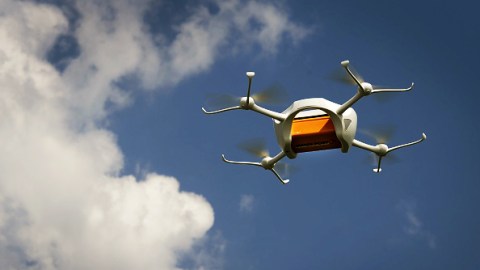Is America Behind in the Drone Revolution?

In 2014, Amazon VP Paul Misener wrote this letter to the FAA requesting an exemption to use drone delivery, citing that “it would benefit the public as a whole.” We’re now near the end of 2015 and have yet to get our bulk orders of dog food or bottled water dropped from the sky, but if you live in Finland, you could be closer to receiving your packages from flying robots.
On September 2, the Posti Group got clearance to do a four-day test run of drones from Helsinki and Suomenlinna. Although the first attempt did not land at the correct address, company officials are hoping to streamline the process in order to make drone delivery a real possibility for Finns in the near future.
The FAA is at a crossroads with how to handle the demand for drone technology.
The race of the drones is officially on: Already, Chinese company SF Express delivers 500 packages per day with drones and tech giant Alibaba serves ginger tea to 450 customers via the air-delivery service. This summer, Google’s X lab also announced plans for drones to assist in its same-day delivery service.
Of course, Google faces the same regulatory hurdles as Amazon, so is America behind in the drone revolution? Even the U.S. defense budget has scaled back spending on drone R&D. Only the U.S. Navy spends an increasing amount — this year 22 percent — of its science and tech budget to develop and fund underwater drones.
The FAA is at a crossroads with how to handle the demand for drone technology.
The FAA is at a crossroads with how to handle the demand for drone technology. The interest has ballooned in the past few years among civilians, and the organization has partnered with the Know Before You Fly campaign to spread safety awareness. Just last week, a college student crashed a drone during a Kentucky football game.
The safety issues — both in the sky and on the ground — are certainly real, but the uses for drones are ever expanding. From hurricane tracking to protecting wildlife, drones are providing more access to information and relieving people of dangerous — even impossible — jobs. Whether or not they will be allowed for broader commercial purposes remains unseen.
Innovation expert Elliott Masie says we fall behind in the drone race at our own peril:
—
Daphne Muller is a New York City-based writer who has written for Salon, Ms. Magazine, The Huffington Post, and reviewed books for ELLE and Publishers Weekly. Most recently, she completed a novel and screenplay. You can follow her on Instagram @daphonay and on Twitter @DaphneEMuller.
A drone carrying a mail box of Swiss Post is flying on July 7, 2015 above the airport of Bellechasse, western Switzerland during a press conference. Swiss Post started a series of test for parcel delivery by drone in the alpine country that has many isolated villages in valleys surrounded by mountains. AFP PHOTO / FABRICE COFFRINI (Photo credit should read FABRICE COFFRINI/AFP/Getty Images)





